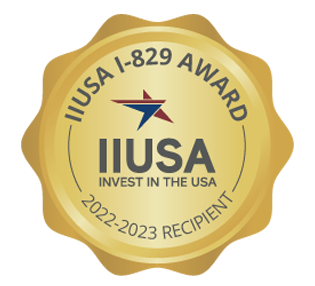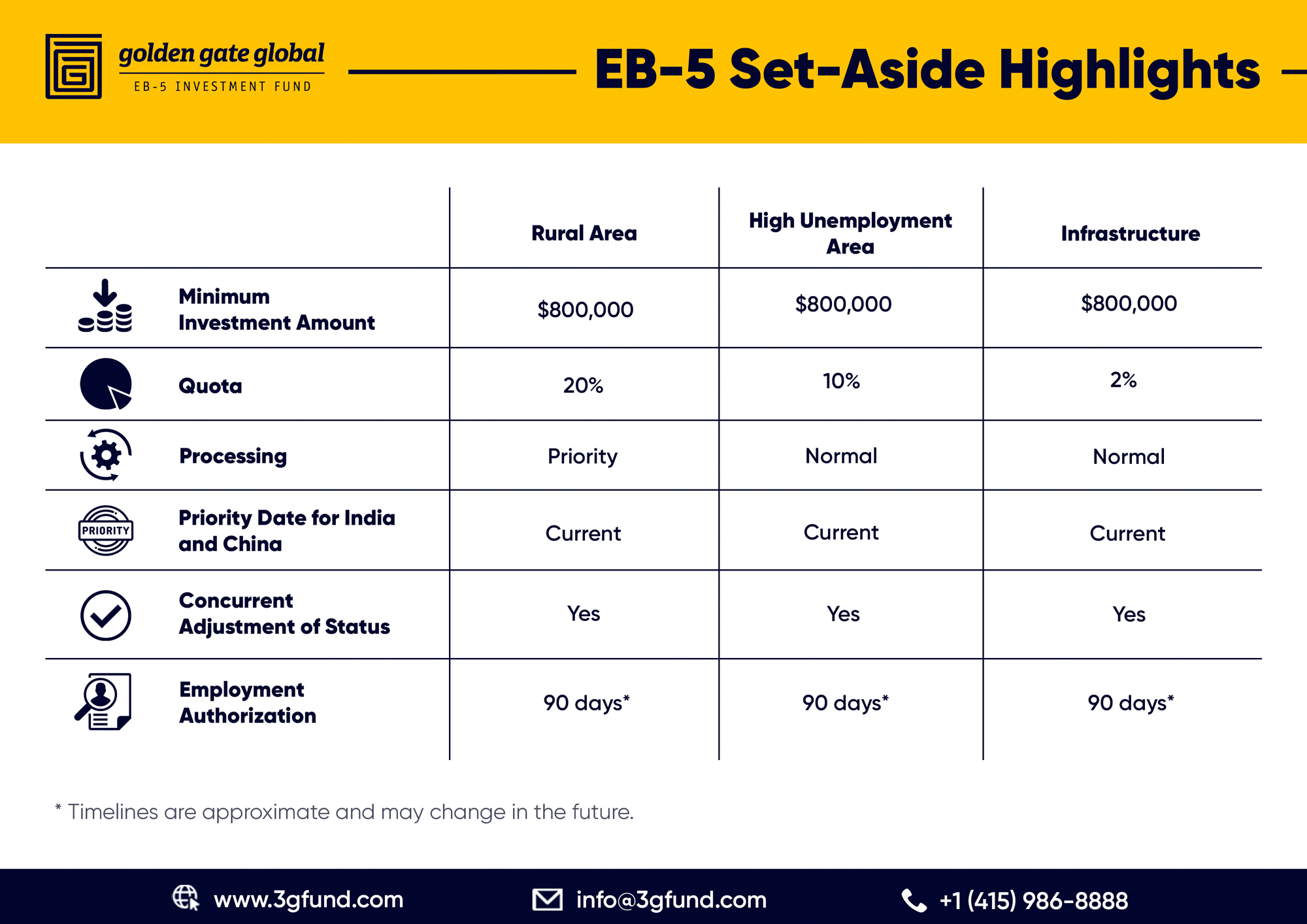Understanding EB-5 Set-Aside Categories and How They Can Expedite the U.S. Green Card Timeline
In March 2022, the U.S. Congress enacted the EB-5 Reform and Integrity Act (RIA), marking a significant development in the U.S. immigration policy landscape. The legislation introduced three distinct set-aside categories for the EB-5 visa program: rural, high unemployment, and infrastructure projects. By directing investments to these targeted areas (known as Targeted Employment Areas or TEAs), the RIA aims to foster economic growth in underserved regions while likely shortening the time it takes for investors to obtain green cards.
Qualification Criteria for Set-Asides Categories
Here is a closer look at the criteria that distinguish rural, high unemployment, and infrastructure projects under the RIA.
Rural TEA Qualification
A project qualifies as rural if it is situated in an area that meets two primary conditions. First, the area must have a population of fewer than 20,000 people; second, it must be located outside of a Metropolitan Statistical Area (MSA) and not adjacent to a city or town with a population exceeding 20,000. This designation aims to channel investments into less densely populated areas, thereby stimulating economic development and job creation in outlying regions.
High Unemployment TEA Qualification
For a project to be categorized under high unemployment, it needs to be located in an area where the unemployment rate is at least 150% of the national average, per U.S. Census Bureau and U.S. Bureau of Labor Statistics data. This criterion ensures that EB-5 investments are directed towards areas most in need of economic revitalization.
Infrastructure Project Qualification
Infrastructure projects are defined by their administration and purpose. To qualify, a project must be administered by a governmental entity and involve the financing, maintenance, improvement, or construction of a public works project. This category underscores the EB-5 program's commitment to enhance national infrastructure, ranging from transportation systems to utilities and beyond.
Quotas for Set-Asides Categories
The RIA also introduced quotas for each of the set-aside categories, ensuring a portion of the annual allocation of EB-5 visas is reserved for investors of those projects. Here's how the quotas are allocated:
Rural Projects: 20% of the total number of EB-5 visas available each year are set aside for projects in rural areas.
High Unemployment Projects: 10% of the total visa pool are set aside for projects in areas with high unemployment rates.
Infrastructure Projects: 2% of the yearly EB-5 visa allocation is reserved for infrastructure projects. Although this quota is less than the others, it demonstrates a strategic and first-time focus on enhancing the nation's infrastructure through government-administered investments.
Priority Date and Processing for Set-Asides Categories
The RIA’s provisions on priority dates and processing bring significant benefits to investors from traditionally backlogged countries like India and China. Here's how these provisions impact Indian and Chinese-born applicants and those based in the United States.
Current Priority Date for Indian and China-Born Applicants
For Indian and Chinese-born applicants, the current priority date is a critical development. This status means that applicants, which have historically faced long waiting periods (retrogression) due to high demand and per-country visa caps, are now able to proceed with their EB-5 visa application without waiting for a visa to become available. This aligns them with applicants from the rest of the world, significantly shortening their path to U.S. residency.
Concurrent Filing and Adjustment of Status for U.S-Based EB-5 Applicants
The current priority date for Indian and Chinese-born applicants is particularly advantageous for those based in the United States. These individuals can now apply for an adjustment of status, allowing them to legally reside in the United States while they await the approval of their Green Card. This provision ensures that applicants do not have the disruption and uncertainty of returning to their home country during the application process.
Golden Gates Global Offers EB-5 TEA Projects
Golden Gates Global (GGG) specializes in offering EB-5 projects situated in rural and high unemployment areas, providing potential investors with opportunities that not only meet the EB-5 program's investment requirements but also align with GGG's commitment to facilitate meaningful economic impact.
For investors looking to participate in the EB-5 program through investments that qualify under the TEA designation, explore the currently available TEA projects offered by Golden Gates Global.
For a Free Consultation with an Experienced EB-5 Professional Enter your Details
The opinions expressed in this video/blog post are solely those of the presenter/author. The information provided herein is for general informational purposes only and should not be considered as professional or legal advice. The presenter/author or Golden Gate Global do not endorse or take responsibility for any actions taken based on the information presented herein. Viewers/readers are advised to seek appropriate professional advice before making any decisions or taking any actions based on the content of this video/blog post.



